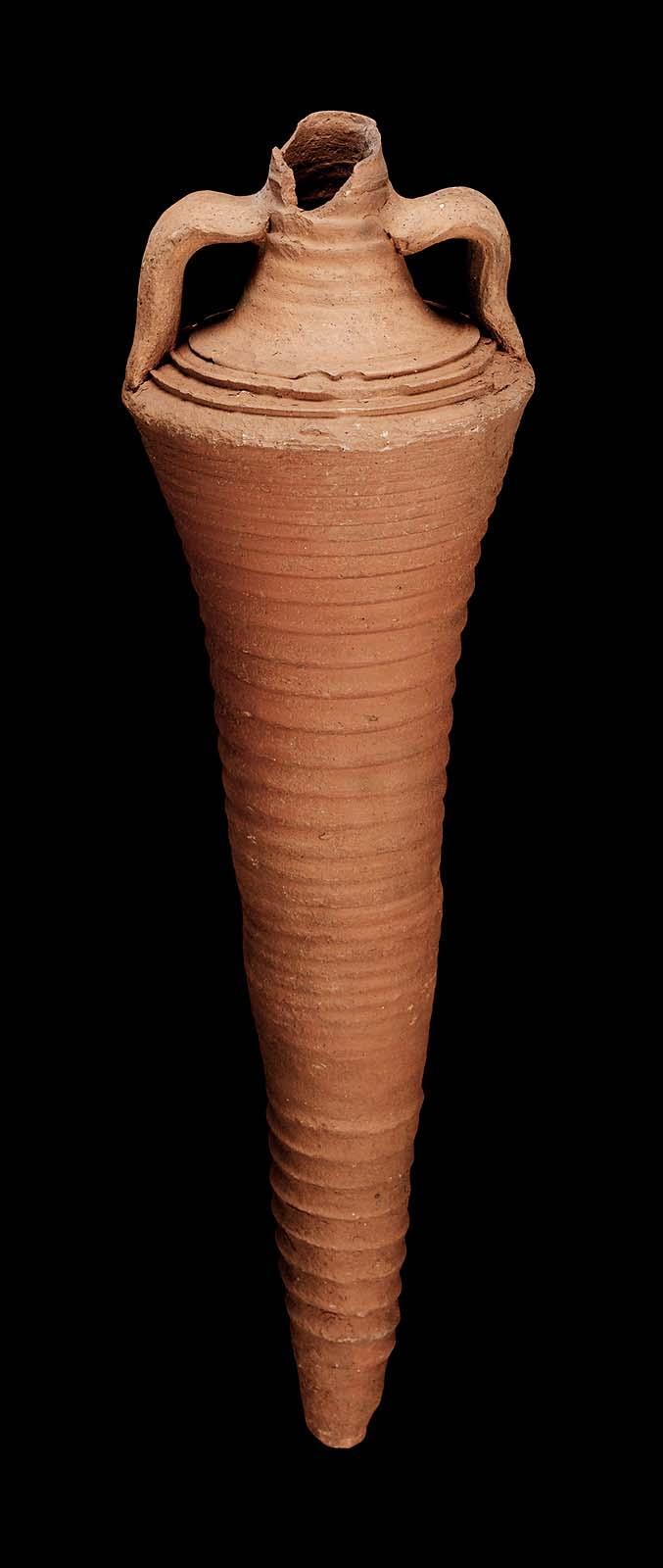Advanced Search 

Amphora
Egyptian
Byzantine (Coptic) Period
7th century A.D.
Findspot: Egypt, Ehnasya, House E
Medium/Technique
Pottery
Dimensions
Overall: 78 x 20 cm (30 11/16 x 7 7/8 in.)
Credit Line
Egypt Exploration Fund by subscription
Accession Number05.275
ClassificationsVessels
DescriptionThis amphora is of a type identified by ceramicists as Late Roman Amphora 7. It was in use between the 4th and 8th century and was manufactured in numerous Egyptian cities (i.e. Antinoopolis). The type has been found throughout the Eastern Mediterranean, Western Europe, and North Africa. It was used primarily to store and transport wine. This type has some of the following standard characteristics: a beaded rim, carinated shoulder (ridge where the shoulder meets the body of the amphora), tapered body, and solid spike at the base. Typically Late Roman Amphorae 7 were made of Nile alluvial clay, which is characterized by its chocolate-brown color.
ProvenanceFrom Ihnasya el-Medina (Herakleoplis Magna), House E. 1903-1904: excavated by William Matthew Flinders Petrie for the Egypt Exploration Fund, assigned to the EEF by the Egyptian government; 1905, presented to the MFA by the EEF. (Accession date: January 1, 1905)
